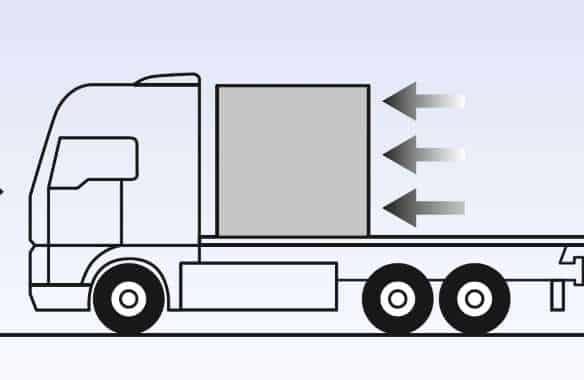Securing Loads: Strategies for Stability, Discover essential strategies for securing loads in the transportation industry. Learn how to ensure stability, safety, and compliance for successful cargo transportation operations.
The transportation of goods and materials is a critical function across numerous industries, necessitating a keen focus on securing loads to ensure stability, safety, and compliance. This blog post delves into the pivotal strategies for securing loads in the transportation industry, offering indispensable insights and best practices to uphold stability, mitigate risks, and facilitate seamless cargo transportation operations. By implementing these strategies, transportation professionals can fortify their operations, safeguard valuable shipments, and uphold regulatory standards, thereby fostering efficiency, safety, and reliability throughout the supply chain.
Table of Contents
Understanding Load Dynamics and Weight Distribution
Anchoring the stability of loads begins with a thorough comprehension of load dynamics, weight distribution, and the impact of forces during transportation. By understanding how cargo behaves in transit and the influence of factors such as acceleration, braking, and turns, professionals can devise tailored strategies for load securement.
Moreover, optimizing weight distribution within transport vehicles and trailers mitigates the risk of imbalances and improper weight shifts, laying a foundation for secure and stable cargo transportation.
Utilizing Appropriate Restraint Systems and Equipment
Securing Loads: Strategies for Stability, Selecting and deploying the appropriate restraint systems and equipment stands as a pivotal aspect of load securement. This encompasses the use of robust tie-downs, strapping, blocking, and bracing materials that are commensurate with the weight, dimensions, and characteristics of the cargo being transported.
By adhering to industry standards and best practices, and ensuring the integrity of restraint systems, transportation professionals can effectively immobilize loads, preventing shifting and movement during transit, thereby upholding stability and safety.
Adhering to Regulatory Standards and Guidelines
Compliance with regulatory standards and guidelines governing load securement is paramount for transportation professionals. Familiarity with the Federal Motor Carrier Safety Administration (FMCSA) regulations, the North American Cargo Securement Standard, and other pertinent guidelines enables professionals to align load securement practices with established safety protocols.
By upholding regulatory compliance, professionals not only mitigate legal risks but also uphold industry-wide standards for load stability, reinforcing the safety and integrity of cargo transportation operations.
Ensuring Adequate Training and Education
Investing in comprehensive training and education for personnel involved in load securement is instrumental in fortifying transportation operations. Equipping employees with the knowledge of proper load securement techniques, safety protocols, and the utilization of restraint systems fosters a culture of diligence and expertise.
Additionally, ongoing training ensures that personnel remain abreast of evolving best practices and regulatory updates, enhancing their capacity to execute load securement with precision, thereby contributing to stable and secure cargo transportation.
Implementing Sling Wire Rope for Enhanced Securement
The integration of sling wire rope systems is yet another critical component of advanced load securement strategies. Sling wire ropes, known for their exceptional strength and durability, are specifically designed for stabilizing heavy loads that require more than conventional tie-down methods. These flexible yet sturdy cables can be expertly configured to distribute tension evenly, prevent load shift, and accommodate unusual shapes or bulky items.
When used in conjunction with other securement methods, sling wire ropes significantly bolster the overall efficacy of the restraint system, ensuring the cargo remains immobile and secure throughout the transportation journey. It is essential for professionals to be proficient in the proper selection, installation, and maintenance of these sling systems to guarantee their optimal performance and reliability.
Implementing Routine Inspections and Maintenance
The implementation of routine inspections and diligent maintenance procedures fortifies the stability and integrity of load securement practices. Regular assessments of restraint systems, tie-downs, anchor points, and vehicle/trailer conditions are essential for identifying potential vulnerabilities, wear and tear, or structural deficiencies.
By conducting proactive inspections and adhering to maintenance schedules, transportation professionals can preemptively address issues, rectify deficiencies, and preserve the efficacy of load securement systems, ensuring sustained stability and safety during cargo transportation.
Securing Loads: Strategies for Stability, Securing loads for transportation demands a meticulous approach, underpinned by a profound understanding of load dynamics, the utilization of appropriate restraint systems, adherence to regulatory standards, comprehensive training, and proactive maintenance. By integrating these strategies into cargo transportation operations, professionals can fortify the stability, safety, and compliance of load securement practices, thereby fostering efficient, reliable, and secure transportation of goods and materials. Upholding stability in load securement not only minimizes risks and liabilities but also instills confidence in clients, stakeholders, and regulatory authorities, underscoring the commitment to excellence and safety within the transportation industry.
